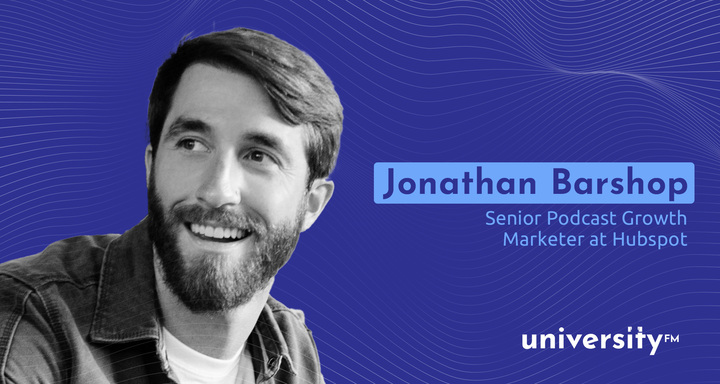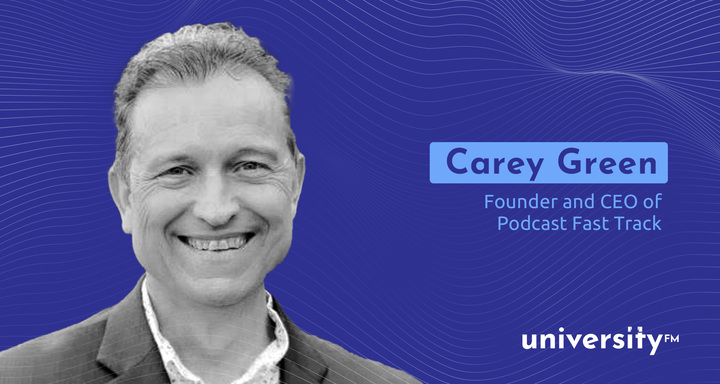COVID-19 forced an abrupt shift in community building. Traditionally, alumni engagement played out mainly through face-to-face events. Many universities and colleges accelerated and prioritized digital campaigns. Engaging audiences through these channels is now a top priority. But, what platform should you invest in?
Taking the Road Less Traveled can be a Fruitful Journey
Video conferencing and streaming have dominated virtual activities, but podcasts, an often overlooked channel, have flourished. It offers a viable alternative to social media and video platforms. In fact, 116 million Americans listened to podcasts this year. Why has the number of listeners grown?

More Time, Upskilling, and New Learnings
The workplace has also undergone significant changes this year. Employers who implemented at-home working policies forced employees to adjust quickly—having greater autonomy and flexibility allowed for more spare time.
This is why more than half (57%) of heavy podcast listeners tune in to learn something new, suggesting these consumers rely on podcasts as a source of new learning and information. You’ll find that they’re much more open to new information.
“The fact that people long for connection, for a depth of understanding and nuanced discussion, and for refreshingly ‘slow’ content compared to frenetic feeds — maybe that makes it the right time to launch your show.”- Meisha Bochicchio (Wistia, 5 Reasons Why 2021 Will Be The Biggest Year for Podcasting)

Whether you are just starting your school’s podcast or already doing so, here are all the data points you can use to plan your editorial and release schedule.
Who Listens to Podcasts?
Compared to streaming platforms like YouTube and social media networks like Facebook, podcasts remain less crowded. These are two critical elements of podcast demographics:
- 28% of monthly podcast consumers have a college degree.
- 45% of U.S. listeners are people aged 35 and above.
It sounds like the alumni base you want to reach, right? Imagine reaching them when they’re all ears?
“Our alumni podcast platform has tapped into a new dimension of the deep roots of our network, and we are blossoming as a community through this amazing medium. The Alumni FM producers have an amazing talent for making the stories shine”-Tenny Frost, Executive Director, Development and Alumni Relations at Berkeley Haas

Where and How Do They Listen to Podcasts?
A recent study showed that 22% of listeners tune in while driving to work, while 49% of podcast listening happens at home. Both listening behaviors are expected to grow in two to three years.

And how do they access and listen to these shows? Listeners under the age of 35 use YouTube more than any other platform to access podcasts, and they often listen while doing other things, such as playing computer games. In fact, popular podcaster Joe Rogan’s show is frequently accessed on YouTube.
Podcasting is also a trend that YouTubers are adopting. Podcasting offers an excellent opportunity for building communities, but the lack of an interactive app hampers an overall experience. Currently, no platform combines listening to the shows, interacting with the hosts and guests, and accessing the products, books, music, and web resources mentioned in the shows. But while we’re eagerly awaiting to have an app that addresses all these, it’s essential to make sure you’re on these top streaming platforms:
- Apple Podcasts is number one in download numbers, with 29.3% of podcast users and 23,229,971 downloads.
- Spotify is a close second with 28.3% podcast listeners or 23,180,132 downloads— a 25% increase from 2020
- Coming in third is Google Podcasts, with 2.8% of podcast listeners (primarily android users) and 2,212,385 downloads.
- The rest listen from YouTube channels, their favorite podcasters’ websites, or other platforms like Fireside and Stitcher.
If you have not yet optimized your podcast production flow or are not yet on these platforms, you might lose opportunities to build a bigger audience. Is it time to work with a podcasting partner? There are many tools that can be used, but working with professionals on your podcast’s technical and storytelling aspects can help you scale and grow. Then, you’ll have time to think about the bigger picture and tie together your strategies.
What’s Should be Next For Your Podcast Plans?
If you’re still on the fence about investing more in your alumni podcast, keep these things in mind:
- Content marketing is fundamentally changing, and there’s a focus on unique consumption behavior and content length. More and more people are primarily focusing on long-form content that they read or listen to.
- Podcasts are easy to listen to. It’s entertaining and easy to consume.
- It’s a content ecosystem on its own. A single podcast episode might be responsible for sparking two blog posts and a video, for example.
- This means you can scale down on other activities and use it as an anchor for engaging content.If you want to learn the best practices, why don’t you join our growing community of alumni podcasters? We’re building a community of alumni engagement teams looking to develop their podcasts and others that have already built a production engine.
Have more questions in mind?




